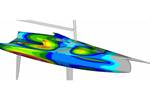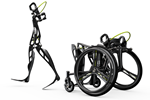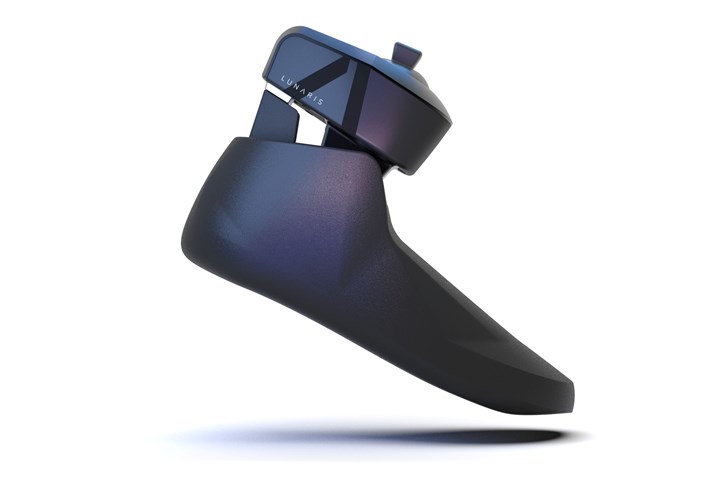Solico composite engineers bring comfort, flexibility to new Axile Bionics ankle prosthetic
Lunaris is Solico’s first medical prosthesis design, using advanced composite components to reduce weight and outer dimensions, and enhance wearability.
Solico NL (Oosterhout, The Netherlands), a composite engineering specialist for the industrial, marine and defense sectors, announces its recent collaboration with prosthetics specialist Axiles Bionics (Bruxelles, Belgium). The Axiles Bionics’ Lunaris is an ankle-foot prosthesis which features bespoke composite components engineered and optimized by Solico.
The new Lunaris prosthesis uses advanced composite components to reduce the overall weight and outer dimensions of the unit, enhancing the performance and aesthetics when compared to earlier all-metallic designs. The innovation enables Axiles Bionics to contain the Lunaris’ AI sensor package in a compact size 36 foot, as well as deliver the specific non-linear stiffness required for a more natural gait.
Solico engineers worked closely with the Axiles Bionics design and engineering teams throughout the two-year project, carrying out laminate optimization, finite element (FE) simulations and strength verifications for the composite components.
“The Lunaris was a unique and challenging design project, being our first composite medical prosthesis design, and also a much smaller structure than we typically analyze,” Katleen Mattheus, composite lead engineer, Solico, says. “Our FE analysis allowed us to predict the stiffness of various setups and model how the foot would behave, speeding up the optimization process and reducing the real-life test time required. The final design was load tested in our lab to verify the strength and real-life characteristics of the composite parts.”
“We decided to bring Solico in since the start of our development process,” Pierre Cherelle, CEO Axiles Bionics, adds. “Doing so very early on, and designing collaboratively, has given us the opportunity to not only integrate high-level expertise in composite materials and their behaviors, but also to bring very practical know-how in the daily and long-term use of those components. This resulted in a fantastic product, as well as a significant increase in intellectual property [IP] that will provide Axiles Bionics with long-term competitive advantages.”
Related Content
-
Partners recycle A350 composite production waste into adjustable-length rods for MFFD
Herone, Spiral RTC, Teijin Carbon Europe and Collins Aerospace Almere recycle A350 thermoplastic composite clips/cleats waste into rods for the all-thermoplastic composite Multifunctional Fuselage Demonstrator’s crown.
-
JEC World 2023 highlights: Innovative prepregs, bio-resins, automation, business development
CW’s Jeff Sloan checks in with JEC innovations from Solvay, A&P, Nikkiso, Voith, Hexcel, KraussMaffei, FILL, Web Industries, Sicomin, Bakelite Synthetics, Westlake Epoxy and Reliance Industries.
-
Dawn Aerospace reusable rocket-powered aircraft flies twice in one day
Eighth and ninth flights of composites-intensive Mk-II Aurora reach an altitude of 63,000 feet, demonstrates same-day reusability capability for rocket-powered systems.
















